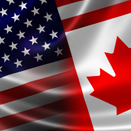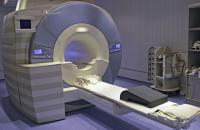
As with the CE marking in the European Union, electrical and electronic products released on the North American market must be designed to ensure that they do not pose a risk to users and their property, and must also abide by the applicable frequency spectrum criteria.
Before releasing a product to market you will need to complete the necessary tests and procedures, which will vary depending on its nature and intended usage.
Specialising in equipment testing, with FCC Accreditation and CBTL status under the CB scheme, Emitech offers a wealth of technical know-how and expertise in compliance testing and certification for products destined for sale in North America (USA and Canada).

The EMC and radio requirements which apply in North America are primarily managed at federal level.
The Federal Communications Commision in the USA and ISED in Canada are responsible for the rules and procedures which ensure that electronic systems do not create interference which would adversely affect the frequency spectrum.
The regulations which they set apply in all states (USA) and provinces (Canada). In both countries, the frequency spectrum is managed at federal level.
Unless the product is designed for certain specific uses (e.g. medical), only emissions are covered by federal regulations in both cases.
Medical equipment sold in the United States is subject to the FDA's immunity requirements.
Depending on the nature of the equipment marketed, several procedures are applicable, some of which may require specific recognition.
Our laboratories are FCC Accredited (FCC part 15, FCC part 18, ANSI C63.4-2014, ANSI C63.10- 2013, FCC MP-5) and recognised by ISED (test sites 4452A-2, 4379A-1, 4379A-2 and 4379C-1)
The equipments are tested according to the FCC Part 15 standard for radio frequency equipment or according to the FCC Part 18 standard for industrial, scientific and medical equipment.
Supplier’s Declaration of Conformity (DoC) is a procedure that requires the party responsible for compliance ensure that the equipment complies with the appropriate technical standards. The responsible party, who must be located in the United States, is not required to file an equipment authorization application with the Commission or a TCB. Equipment authorized under the SDoC procedure is not listed in a Commission database. However, the responsible party or any other party marketing the equipment must provide a test report and other information demonstrating compliance with the rules upon request by the Commission.
The responsible party has the option to use the certification procedure in place of the SDoC procedure. This procedure requires the manufacturer or importer responsible for compliance to use an accredited laboratory to perform the measurements to ensure that the equipment meets the appropriate technical standards.
The Certification procedure does not require that the responsible party be located in the United States.
Certification is the most rigorous approval process for RF Devices with the greatest potential to cause harmful interference to radio services. It is an equipment authorization issued by an FCC-recognized Telecommunication Certification Body (TCB) based on an evaluation of the supporting documentation and test data submitted by the responsible party (e.g., the manufacturer or importer) to the TCB.
Testing is performed by an FCC-recognized accredited testing laboratory.
After examination of the dossier by the TCB and the marketing authorisation granted, the data are published in a public database maintained by the Commission. A "Grantee Code" is issued and serves as the basis for the FCC ID to appear on the equipment.
For example, mobile phones, cordless phones, wireless LAN equipment, remote control transmitters, land mobile radio transmitters, wireless medical telemetry transmitters or walkie-talkies are affected by this procedure.
Information including the technical parameters and descriptive information for all certified equipment is posted on a Commission-maintained public database. In addition, equipment subject to approval using the Supplier’s Declaration of Conformity (SDoC) procedure can optionally use the Certification procedure.
Consult the FCC guide to securing market approval.
Equivalence between FCC and ISED
To speed up the certification process in Canada,ISED accepts reports of compliance with US Federal Communication Commission standards and vice versa.
However, in the event of deviations between Industry Canada and FCC technical standards, further testing is required.
Canada's Radiocommunication Act and Radiocommunication Regulations state that manufacturers, importers, distributors and sellers of radio apparatus, interference-causing equipment or radio-sensitive equipment have three responsibilities:
Technical standards for radio equipment help to:
Devices marketed in Canada are grouped into two categories to differentiate the applicable rules and procedures based on the EMC characteristics of these products (Radio Devices, Interference-causing equipment and Radiosensitive Equipment).
Category I equipment is subject to an approval procedure described in document RSP-100 which is based on the examination of a technical memorandum (including test results according to the relevant standard) and administrative documents required by the competent authority. Upon successful completion of this fee-based procedure, Industry Canada issues an IC identification number to be shown on the equipment and a technical acceptance certificate. Declarations of conformity are not analyzed a priori and the approval number is issued by the Bureau of Certification of ISED in a fee-based procedure for the registration of equipment administrative information.
For Class II equipment, the manufacturer or importer must ensure that the equipment meets the applicable standards. To this end, tests must be carried out. If ISED so requests, test results shall be provided to ISED. The standards published in the Canada Gazette indicate the period during which test results must be available to be available for inspection.
Equivalence between FCC and ISDEC
In order to speed up the approval process in Canada, ISED accepts reports of compliance with U.S. Federal Communication Commission standards and vice versa.
However, in the event of deviations between ISED and FCC technical standards, further testing is required.
Unlike the European CE marking system, the North American market does not have a single marking/mark system which indicates that a product complies with the applicable safety regulations.
A certification mark may be mandatory or simply recommended depending on the nature of the product and where it is marketed.
In the US, over 400 standards agencies are involved in the standard-setting process, under the supervision of ANSI (American National Standards Institute): National Fire Protection Association (NFPA), American Society for Testing and Materials (ASTM), Underwriter Laboratories (UL), American Water Works Association (AWWA), Institute of Electrical and Electronics Engineers (IEEE), ...
Standards bodies are not government agencies, and the use of most of these standards is optional.
This context should be compared with that of the CE marking applicable in Europe, whose mechanisms are different.
A standard may become mandatory if cited by a federal, state, regional or municipal authority in the text of laws or regulations.
In the event of an accident causing injury (or worse) and/or material damages, the American justice system may engage the civil liability of those concerned and launch prosecutions for negligence.
Two major laws provide the legal framework for the electrical and electronic safety of products sold and/or used in the USA:
It creates the federal agencyCPSC (Consumer Product Safety Commission) which has authority over 15,000product categories.
Its main mission is to protect the consumer.
The federal regulations associated with the Act are numerous(Title 16 CFR parts 1101 to 1406).
The agency has the power to ban any product which is found to be dangerous.
It has the authority to recall products.
It is responsible for issuing public warnings.
The agency's hotline receives over 185,000 calls each year.
Its website allows consumers to report incidents (21 unique visits each year).
The CPSC has its own inspection capacities.
It can impose fines running into hundreds of thousands of dollars in cases where manufacturers or distributors are clearly aware of dangers inherent to their products.
The Occupational Safety and Health Act passed by the US Congress in 1970.
It created the federal agency OSHA (Occupational Safety and Health Administration) in 1971.
Its mission is to prevent injury, illness and death in the workplace.
Essentially, electrical safety requirements are formulated in the National Electric Code - NEC.
The NEC is not a law in itself, but compliance with it may be required by a state or local legislation that may add additional requirements.
In the 53 US states, Authorities Having Jurisdiction (AHJs) rely on the NEC as a minimum requirement when issuing operating permits and during periodic audits.
OSHA also delegates inspectors to verify NEC compliance at the workplace in 27 states and local OSHs for the remaining 26 states (participating in a similar OSHA supervised program) for just over 97,000 inspections in 2007.
In the event of non-compliance, a fine of up to US$70,000 may be imposed for each identified violation and the offending equipment may be prohibited from use until compliance is achieved.
To simplify the process of attesting a product's conformity, OSHA has developed the NRTL program to which 18 Certification Bodies (American and foreign) adhere.
Its agencies follow the same rules and procedures.
The contribution of the NRTL programme should be seen in the context of a clarification provided by the NEC. In paragraph 90-7, it states that verification is not the responsibility of laboratories, but conversely, Listed products (certified under the NRTL programme) do not have to meet the requirements of the NEC since they meet the criteria of their product standard.
For any product intended for use in the workplace, the use of a certification mark is therefore the easiest procedure for meeting electrical safety requirements.
Three distinct procedures make it possible to certify the conformity of a product through a certification process:
As in the United States, anyone who creates a situation involving the endangering of a person (death, disability, etc.) or the loss of property incurs civil liability and can be sued for negligence, the use of a certification mark is generally recommended for equipment intended for consumers.
A distributor may also ask you to join a voluntary certification process to protect itself from possible legal action.
It should also be noted that within their jurisdictional authority, a certification mark may be made mandatory by a state or city (for example, the city of New York, the city and county of Los Angeles, and the states of Washington, Oregon and North Carolina).
The context of electrical safety requirements between Canadian and U.S. markets is similar in many respects. The possibility for each province and territory to add its own requirements to the Canadian equivalent of the American NEC, the CEC (Canadian Electrical Code or CE code) is certainly not foreign.
However, it should be noted that these two codes often have different approaches to the same aspects. For example, they give different specifications for the conductive grounding equipment and do not take the same approach to determining the minimum cable size and the permissible current.
These similarities and differences are found throughout the brands. A lower case "c" that accompanies the mark attests to the conformity of a product for purely Canadian requirements, a "us" for purely American requirements and double marking for the requirements envelope.
For most electrical and electronic equipment marketed in Canada, a certification mark is required.
We recommend addressing North American market security requirements through the CB scheme.







Emitech Group - Legal information